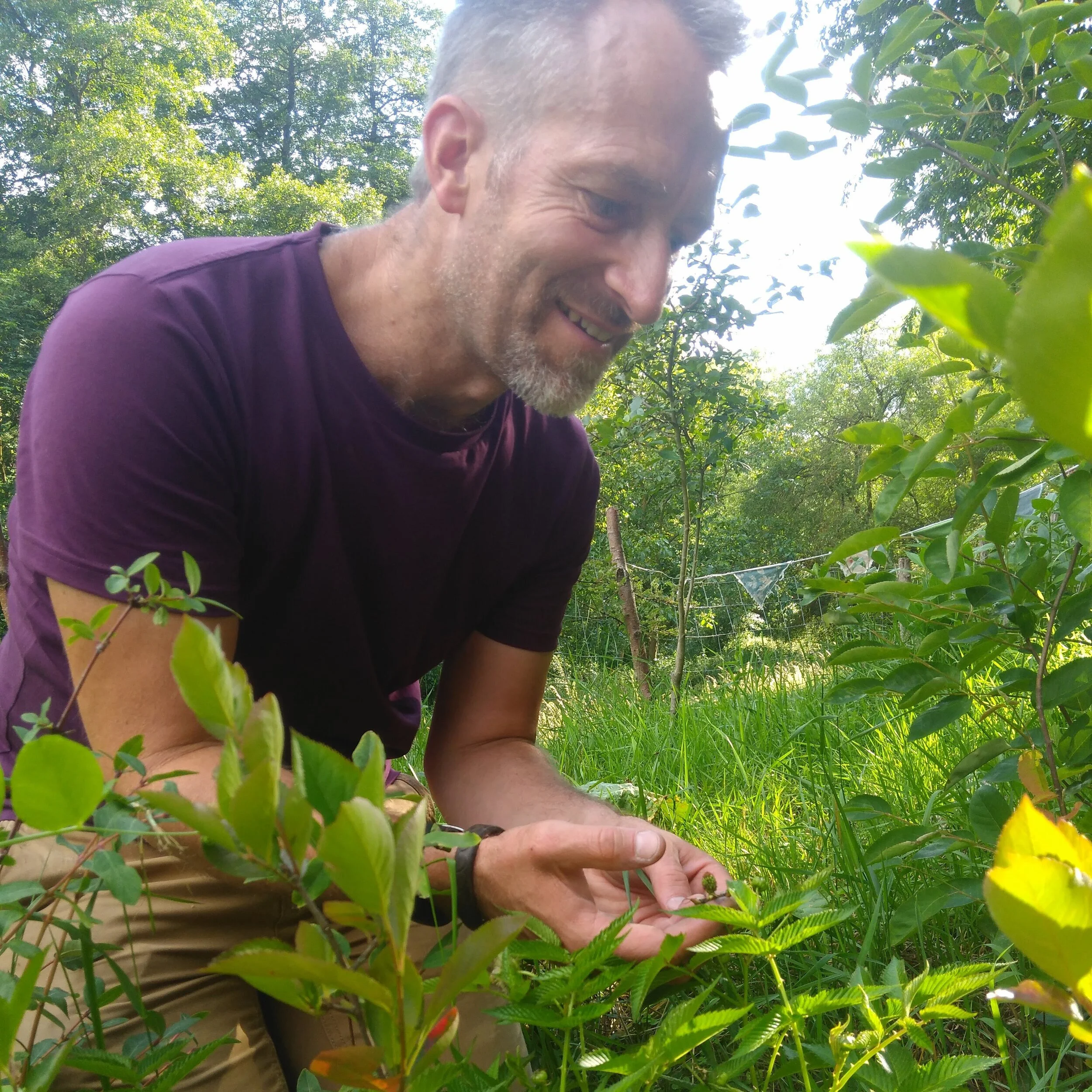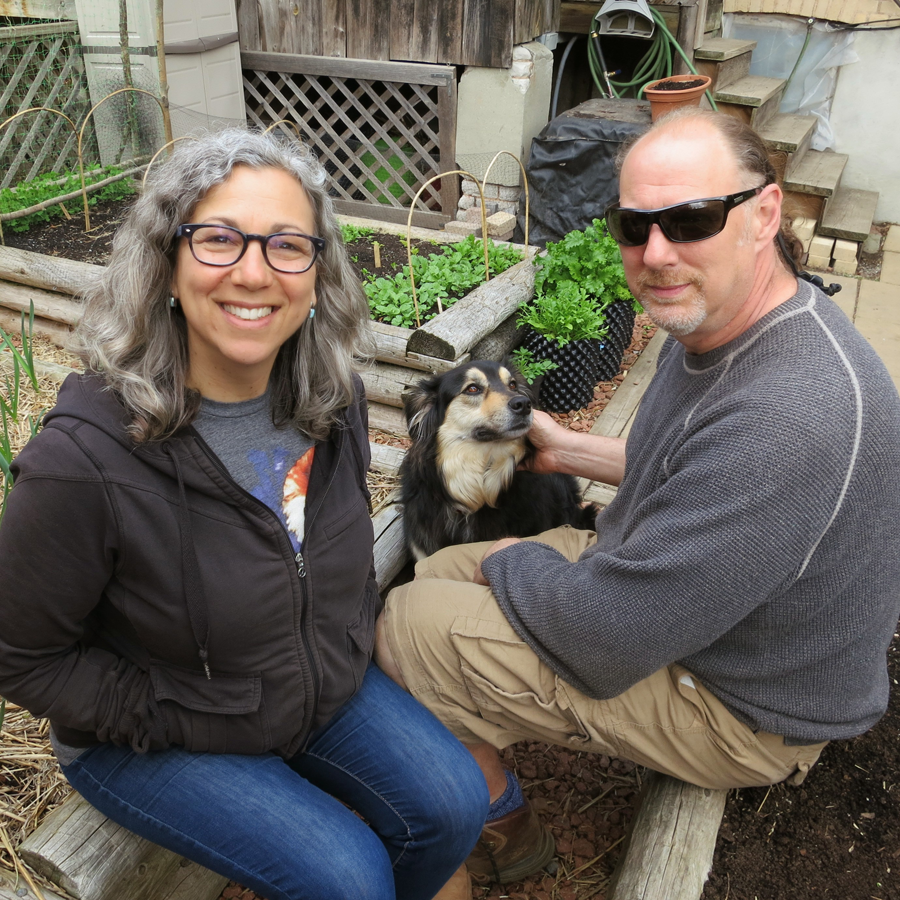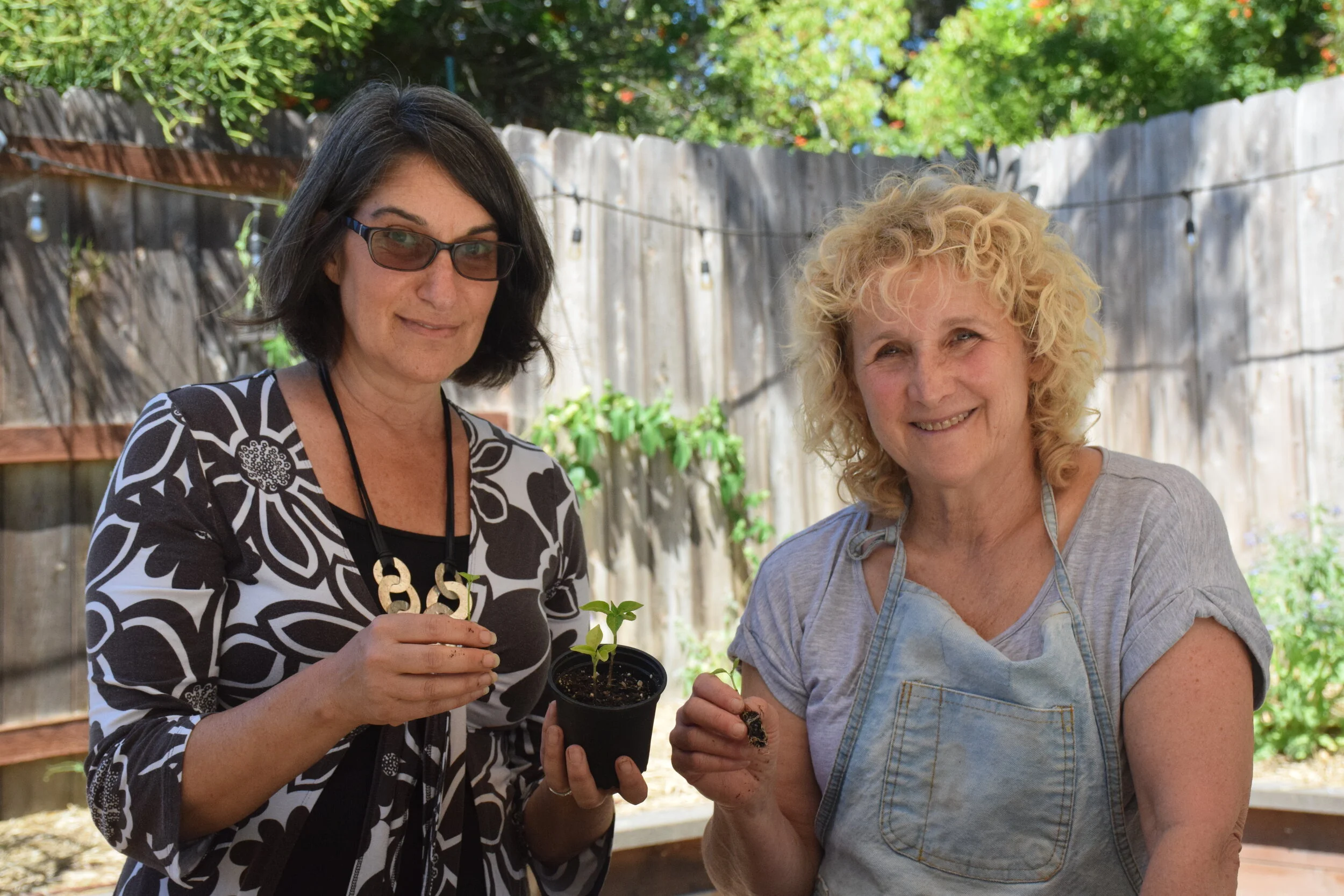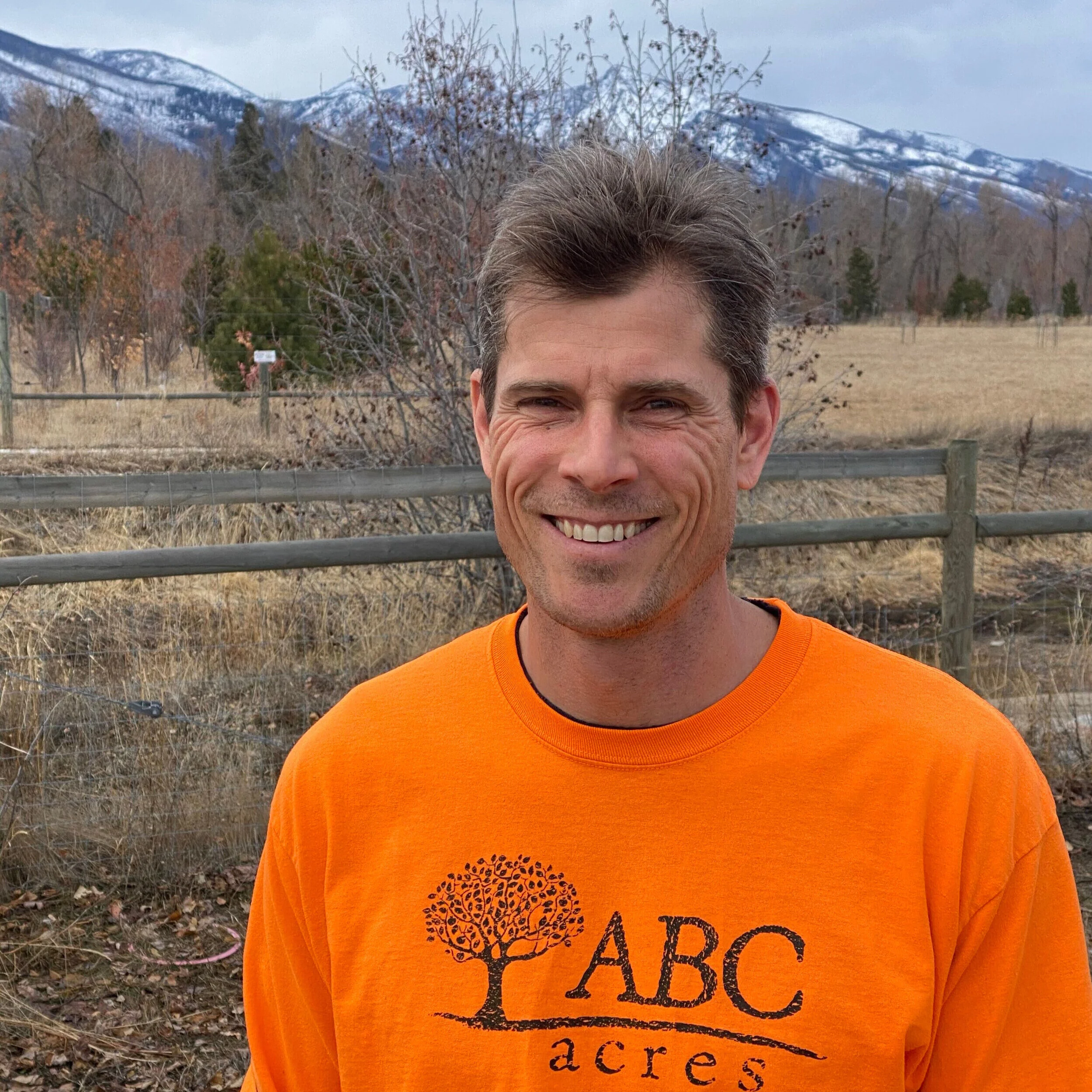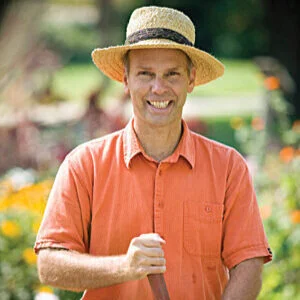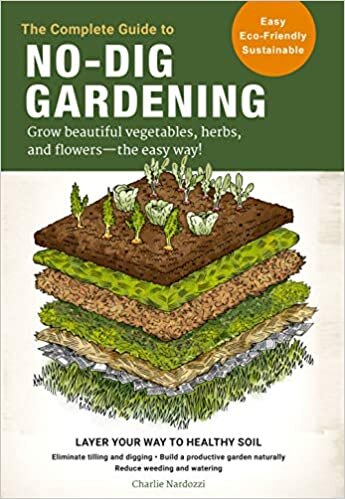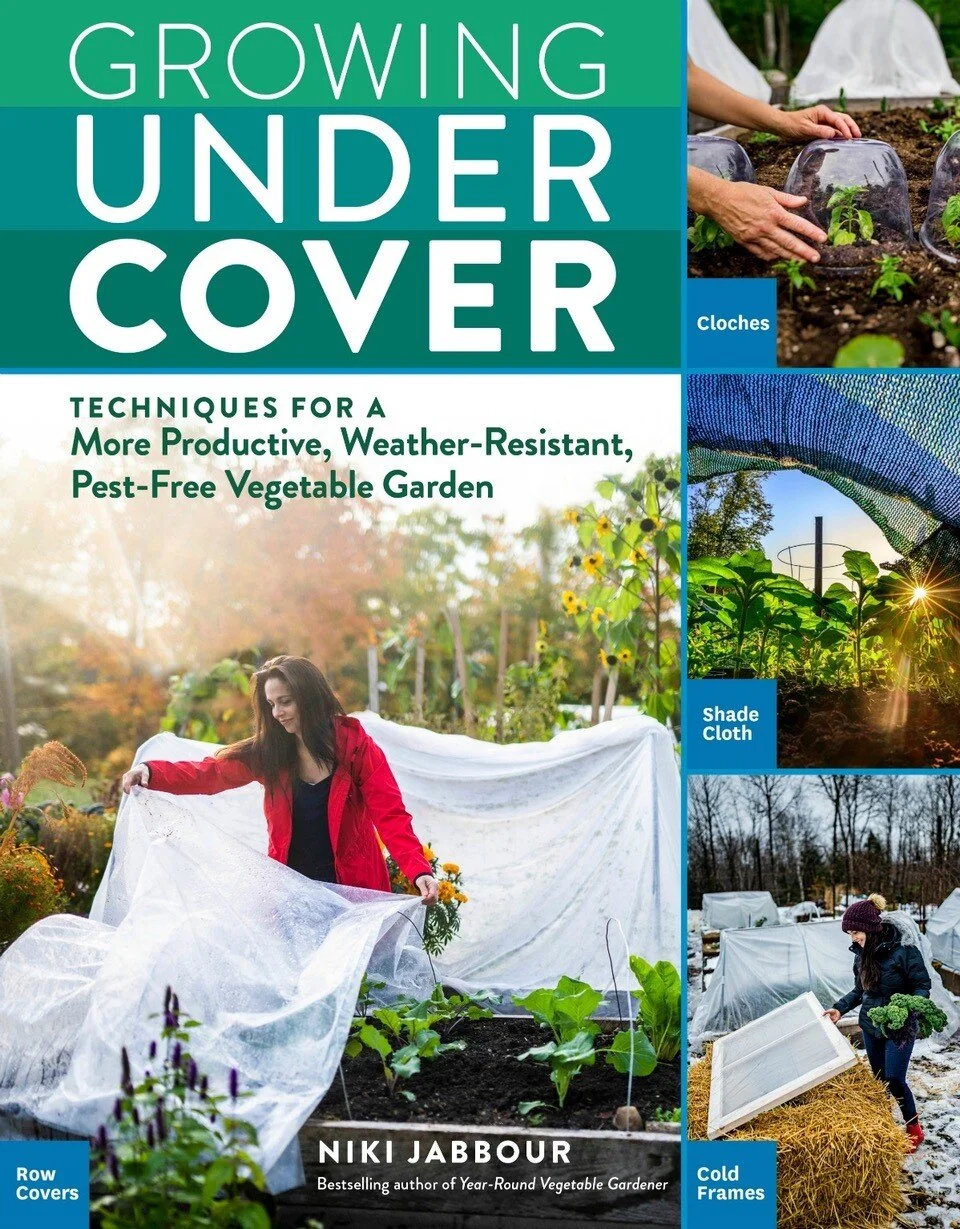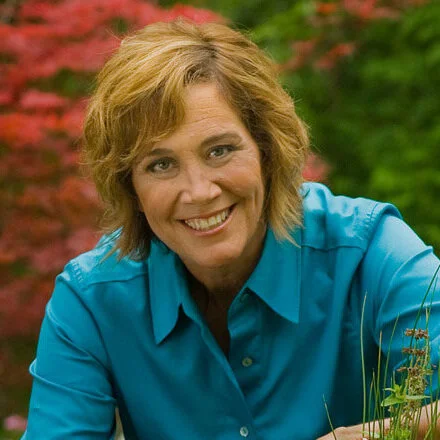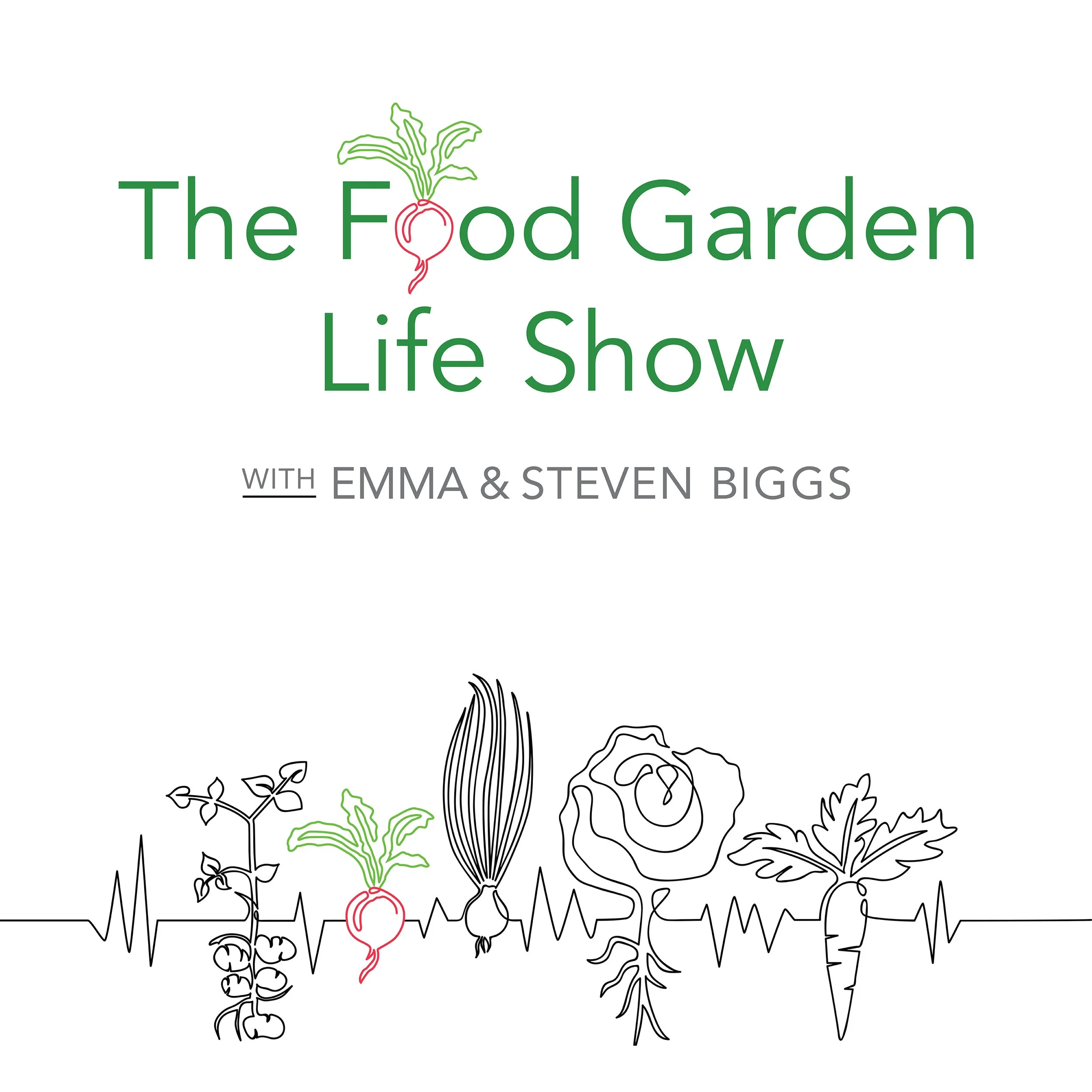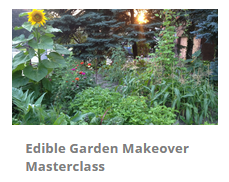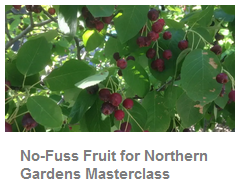Foraging as an Outdoor Classroom
Foraging and outdoor education for children with Mike Krebill from Iowa
We chat with forager and a wild-food educator Mike Krebill in Iowa.
Krebill shares foraging tips, his insights into teaching, his approach to outdoor education—and stories from the years he spent teaching a grade seven elective course on foraging.
Krebill’s new book is A Forager’s Life: Reflections on Mother Nature and my 70+ Years of Digging, Picking, Gathering, Fixing and Feasting on Wild Edible Foods.
Foraging as an Elective
Krebill’s grade seven elective course about foraging was so popular that the school held a lottery to choose which students could take it.
Not a fan of having students read out loud from textbooks, Krebill included lots of hand’s on learning in the class, along with field trips on horseback, by canoe, by bike, and hikes around the neighbourhood.
Dandelion Doughnuts
One of the activities in the foraging class was making dandelion doughnuts—dandelion flowers fried in pancake batter.
While the flower petals are mild, the flower stalk and green portion of the flower are very bitter. Krebill demonstrated to his class the right way to consume the petals while leaving behind the green, bitter portion. (Unfortunately, when the class took the dandelion doughnuts around the school to feed to other teachers, this warning about the bitter portion wasn’t shared!)
Krebill says that students still get in touch to find out how to make dandelion doughnuts, so that they can do it with their own children.
Giant Puffball
In another class, student learned how to cook slabs of giant puffball to crispy, golden perfection.
Krebill explains the importance of finding the bottom of a puffball, and then cutting down the middle from top to bottom to look for indications of a stem or cap—which can indicate that it’s not a puffball…but is a poisonous type of mushroom.
A puffball has a black root-like structure at the bottom. If this has been removed, it’s still possible to find the bottom. Set the puffball on a counter and wait until it stops rolling. Like a flat tire, the bottom of a puffball is flat.
Sumac
Hands-on learning means not all in-class activities work the first time. Krebill says many students were interested in making sumac lemonade. It took 20 years of experimenting to get the sumac lemonade recipe just right.
The sumac berries, he explains, should be picked at the stage he describes as “super sour” — sour enough to cause you to squint your eyes, but then relax. One year his class made lemonade using sumac berries that were at a more sour stage. “The aftertaste would peel paint off metal,” he says with a laugh.
A Forager’s Life
Mike Krebill’s new book is, A Forager’s Life: Reflections on Mother Nature and my 70+ Years of Digging, Picking, Gathering, Fixing and Feasting on Wild Edible Foods.
He is also the author of, The Scout's Guide to Wild Edibles.
Forest Gardens and Fruit
We chat with forest garden designer and edible landscaper Mark Lord about lesser know fruiting plants.
We chat with forest garden designer and edible landscaper Mark Lord in south-western Germany.
“A garden should be a holistic experience, feeding all of your senses, and your mind,” says Lord. He believes food gardens can be about more than just eating—that they can also be visually appealing, bio-diverse, and appeal to other senses such as smell.
We also digress into his experiments making liqueur including linden, serviceberry, cherry…and nettle!
Lord operates The Fruit Nursery, which specializes in unusual and rare plants that produce edible fruit.
Forest Garden Design
Lord talks about the 7 layers that he builds into his forest garden designs.
Upper Tree Layer. This includes taller tree species such as apple, mulberry, and quince.
Lower Tree Layer. This includes shorter trees such as serviceberry.
Vertical Layer. This is a climbing layer with vines such as kiwi, grape—or even vining peas.
Shrub Layer. This includes smaller shrubs such as barberry and currant.
Herb Layer. This layer includes herbaceous plants.
Ground-Cover Layer. This layer can include plants such as creeping bramble.
Underground Layer. This layer includes plants with edible roots, e.g. horseradish.
Lesser Known Fruit
Lord’s passion is unusual and rare plants that produce edible fruit. Here are some of the plants we discuss in the podcast:
Elderberry. In addition to Canada elderberry, he grows blue elderberry (Sambucus caerulea), which he loves for the visual impact of the bright blue fruit.
Serviceberry. He explains that in addition to fruit, serviceberry offers showy white flowers in spring, attractive grey bark in winter—and colourful leaves in the fall.
Haskap. Called “blue honeysuckle” in Europe, he feels this plant deserves space in more gardens for both the fruit and the fall leaf colour.
Clove Currant. This common hedging shrub belongs in edible landscapes too! It has flowers, fragrance, and fruit. “It’s kind of like a black-currant-not-lovers currant,” says Lord.
Cherry Plum. “Cherry plums are fantastic!”
Hardy Kiwi. The vining hardy kiwi is an excellent way to incorporate a vertical layer into a forest garden. He notes that 2 plants are necessary, both a male and female.
Cornelian Cherry. This is Lords favourite. Along with early flowers, this shrub has delicious fruit.
Step-by-Step Vegetable Gardening
Joseph Tychonievich shares his top tips for new vegetable gardeners.
Garden expert Joseph Tychonievich talks about vegetable gardening, and about his new book,
In a broadcast that originally aired live on The Food Garden Life Radio Show, we chat with author, horticulturist, and plant breeder Joseph Tychonievich.
Tychonievich shares his top tips for new vegetable gardeners.
As an avid food gardener, he grows many different food crops. But every so often he focuses on a particular crop and grows as many varieties as he can. He recently emerged from a cucumber phase…and as a teenager, he went through a pineapple phase.
He gardens in his own yard, a neighbour’s yard, and even inside in a closet.
Tychonievich’s new book is The Comic Book Guide to Growing Food: Step by Step Vegetable Gardening for Everyone.
The Comic Book Guide to Growing Food, by Joseph Tychonievich.
Vegetable Gardening Tips
What to Grow
Tychonievich points out that a common recommendation for new gardeners is to grow radishes, because they are easy to grow. He hasn’t met a lot of people who love radishes, so he takes a different approach: Start with what you like to eat.
Garden Size
Start small. If you can handle it, do more next year; and if you don’t, do less.
Making Garden Beds
He suggests new gardeners start with raised beds because by starting with new, weed-free soil, there are fewer weeds.
Buying Plants
Tychonievich is a fan of independent garden centres with knowledgeable staff who can help new gardeners.
Backyard Urban Farming in Toronto
We chat with The Backyard Urban Farm Company about home food gardens.
Arlene Hazzan Green and Marc Green from the Backyard Urban Farm Company talk about installing food gardens and the urban food-growing scene in Toronto.
We chat with Arlene Hazzan Green and Marc Green, co-owners of The Backyard Urban Farm Company (BUFCO) in Toronto about their mission to help people grow food at home.
They are edible landscapers who help people plan, plant, and maintain food gardens. They have even ventured into wheelchair-accessible beds.
From Film to Farming
Hazzan Green explains why, after over 30 years in the film industry, they decided to venture into the business of edible landscaping, saying, “It was the lifestyle it was offering us that had such an appeal.”
In hindsight, she realized that a lot of the film scripts she had been pitching had a farming theme. “I realized that what I was trying to do in my writing was create the life that I want to live,” she says.
Process
When helping develop edible landscape plans with new gardeners, they look at:
Where they want to grow
The growing conditions
What they like to eat
How many people they want to feed
How much time and effort they can put into it
Tips for New Gardeners
For new gardeners, Green and Hazzan Green offer the following suggestions:
Start small. Hazzan Green suggests two or three pots—so that it’s not overwhelming in the beginning. For example, one pot with tomato and basil, another with lettuce, and a third with beans and peas.
Make a plan. It could be elaborate or simple—but have something planned before shopping…or you might end up buying more than you need.
Do your research. Don’t go with your first idea. Green says he has seen many people make beds using railway ties or treated wood…only to find out afterwards these are not suited to food gardens.
Coalescing in the Toronto Urban Farm Scene
Hazzan Green says that when they started it was difficult to find agricultural advice tailored to the urban setting. That’s changed a lot in the 12 years they have been in business. “What’s happening now is there’s a coalescing of all these groups—there’s a real network., she says.
“As a group of individual businesses and gardeners and growers we’ve now found a way to unite and become a real force for change in the way we view urban agriculture.”
Hunger Relief through Growing
We head to San Diego, California to chat with Mim Michelove and Nan Sterman, both of whom combine a love of growing food with food-growing activism.
Mim Michelove and Nan Sterman started the Grab & Grow Gardens Program to help people in their community affected by the COVID-19 pandemic.
“Food Deserts are also nursery deserts.”
We head to San Diego, California to chat with Mim Michelove and Nan Sterman, who share a love of growing food and involvement in food activism.
As unemployment in their community grew during the COVID-19 pandemic, and as the local food supply became shaky, they decided to use their connections with commercial growers, in the community, and with social service agencies to help people feed themselves. The result was the Grab & Grow Gardens program.
Grab & Grow Gardens
The Grab & Grow Gardens kits contain two transplant-size vegetable seedlings in a carry bag, along with growing instructions in English and Spanish. “We do this in Mim’s backyard,” explains Sterman, as she talks about assembling the kits with a small army of volunteers.
Kits are distributed to those in need through hunger relief agencies, school districts, and affordable housing organizations.
At the time of the interview in February, 2021, they had distributed over 8,500 kits.
Initially, everything for the kits was donated. Securing donations of vegetable transplants was possible because they are located in an area with a large vegetable-transplant industry.
As demand for the kits grew, and as they were able to access grants and donations, they began to purchase seed, allowing them to choose the most suitable crops and varieties.
Tips for Launching Community Initiatives
Sterman and Michelove share their tips for successfully launching community initiatives. These include:
Work with agencies that are already distributing something to the people you want to reach.
Spread the word about what you want to do in your community; there will be others who want to help, but are not sure what to do.
Think about what you can do that will help the end user succeed.
Brainstorm resources in the community, including companies, individuals, and organizations—and then reach out.
“That’s where the power comes in, where you pull people in from all different levels.” Nan Sterman
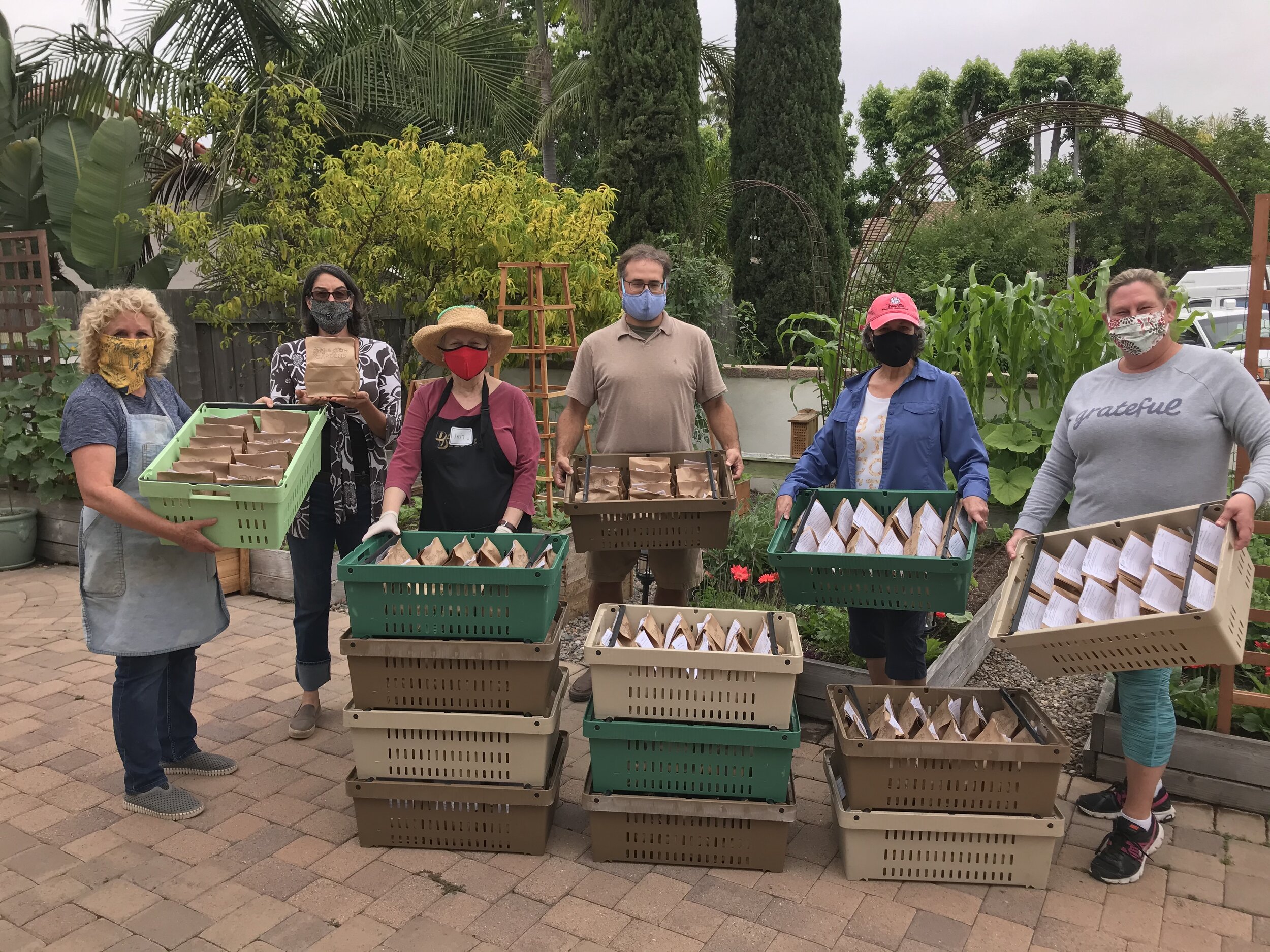
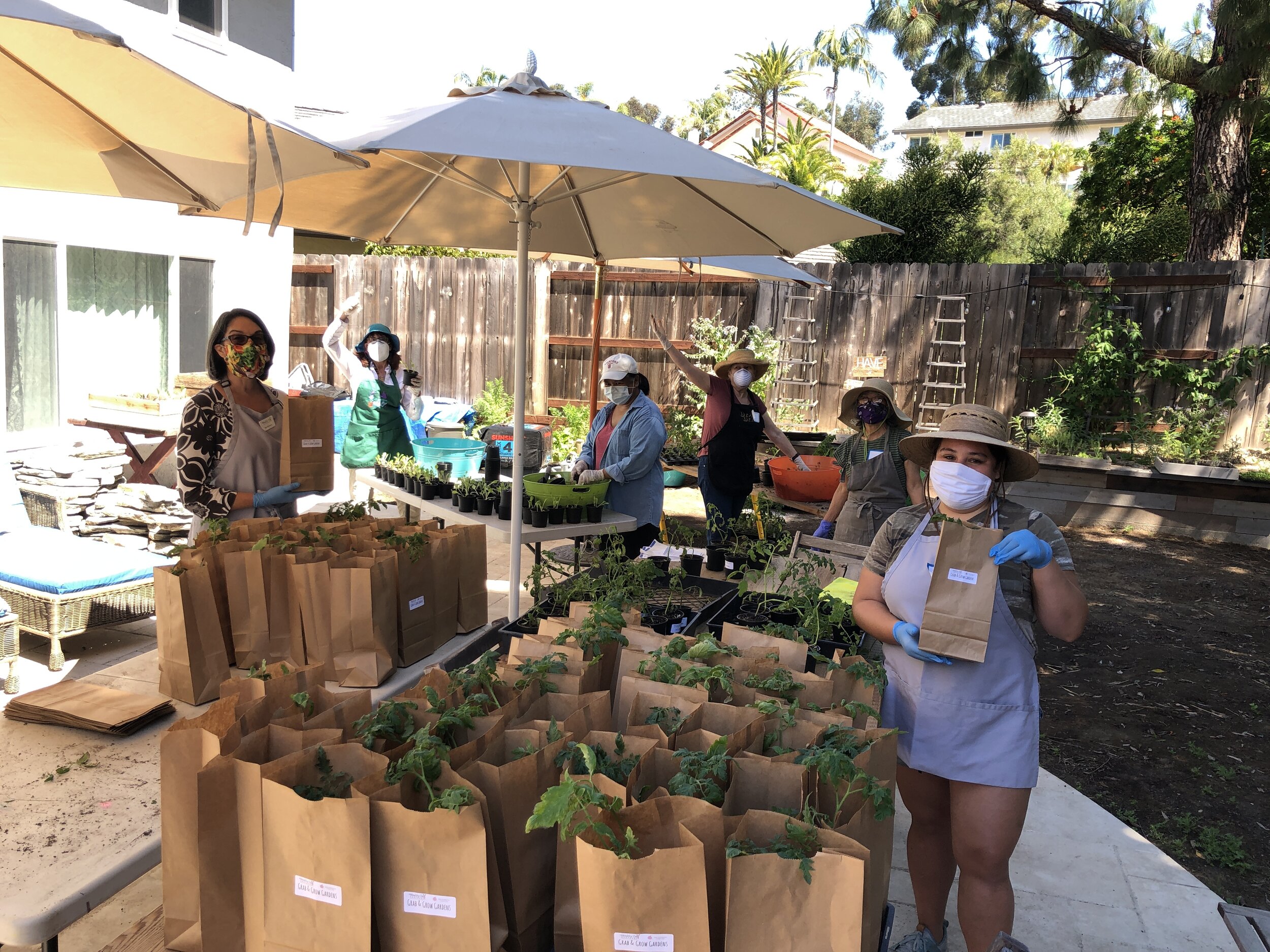
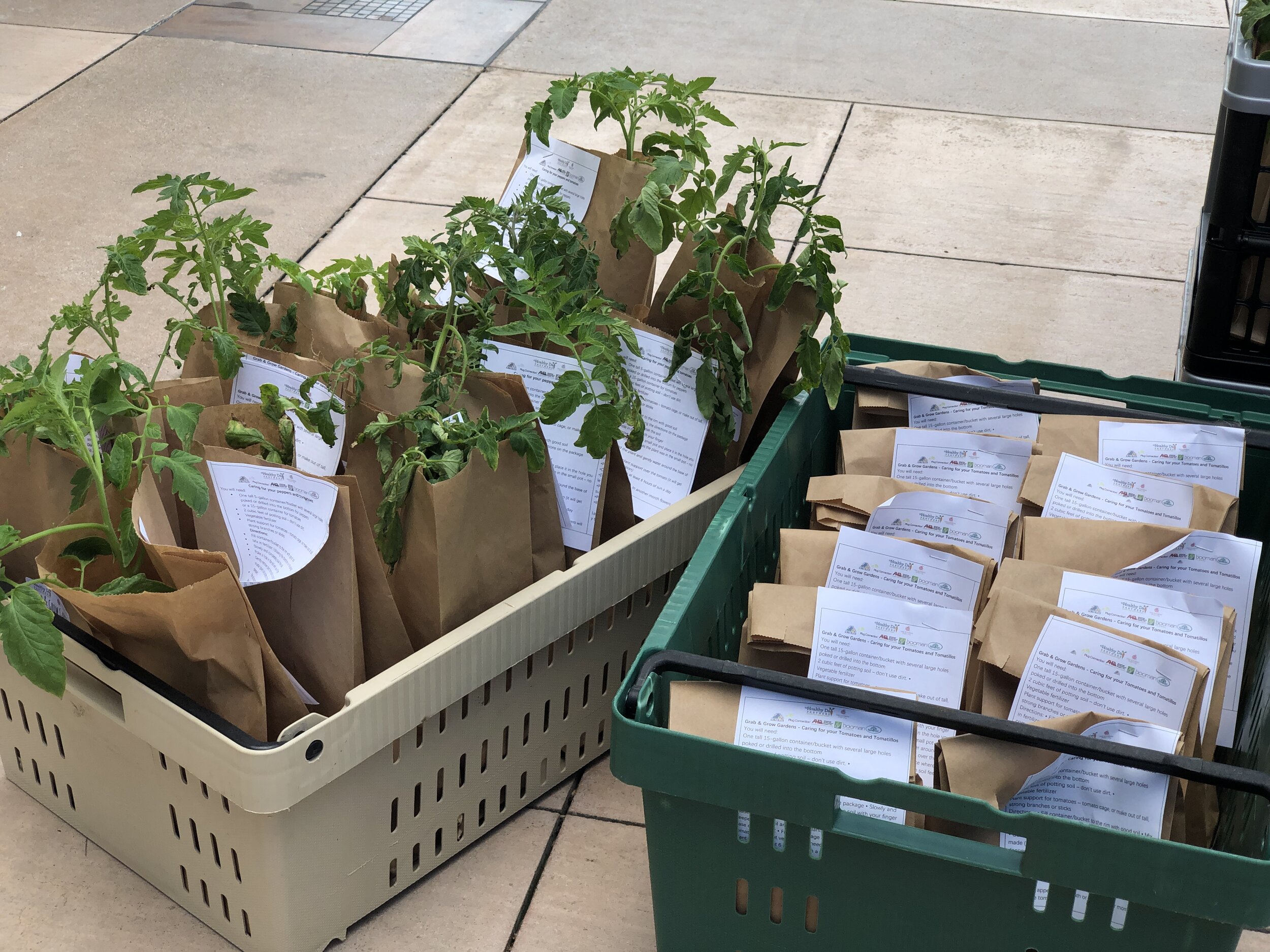
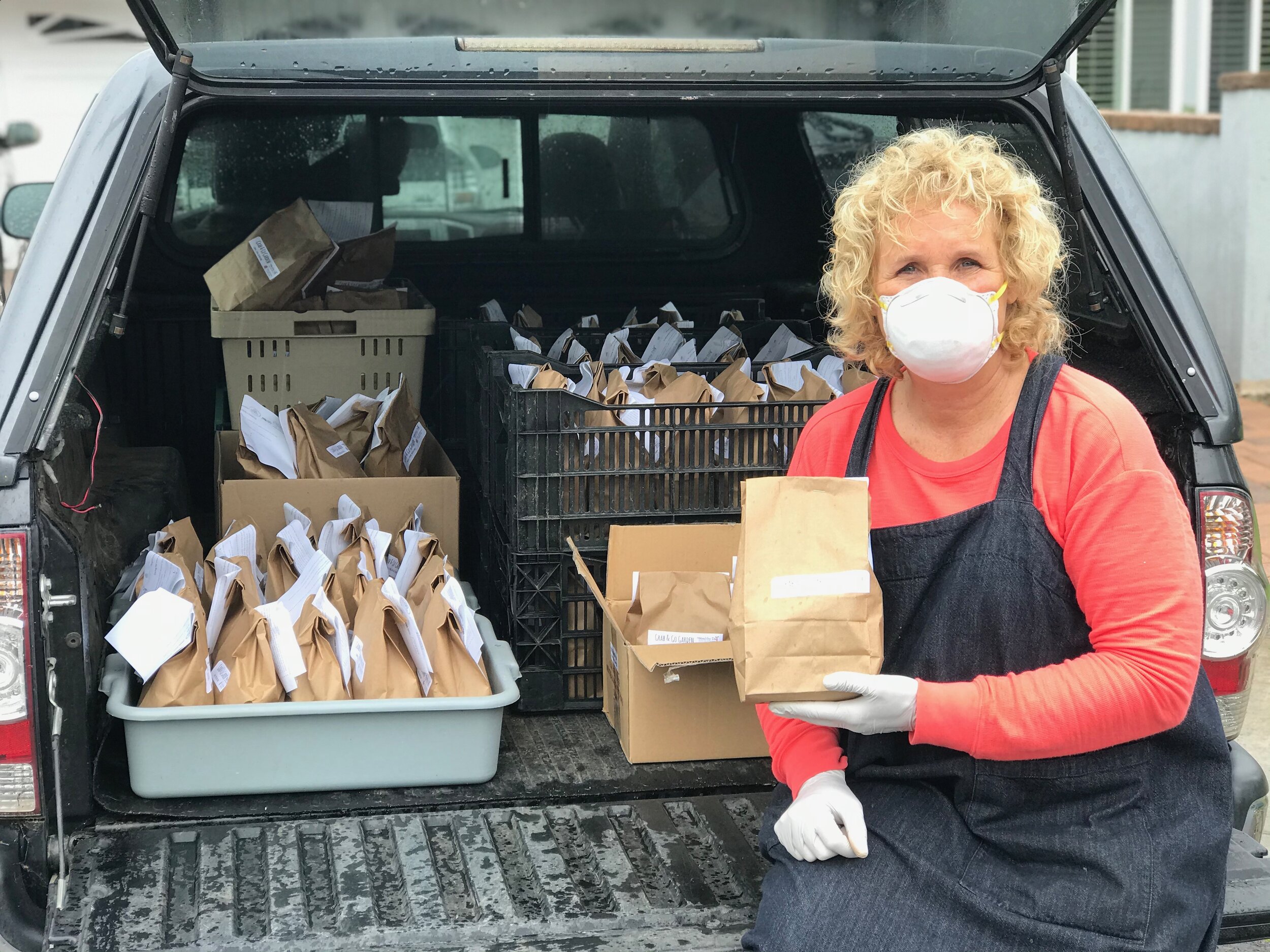
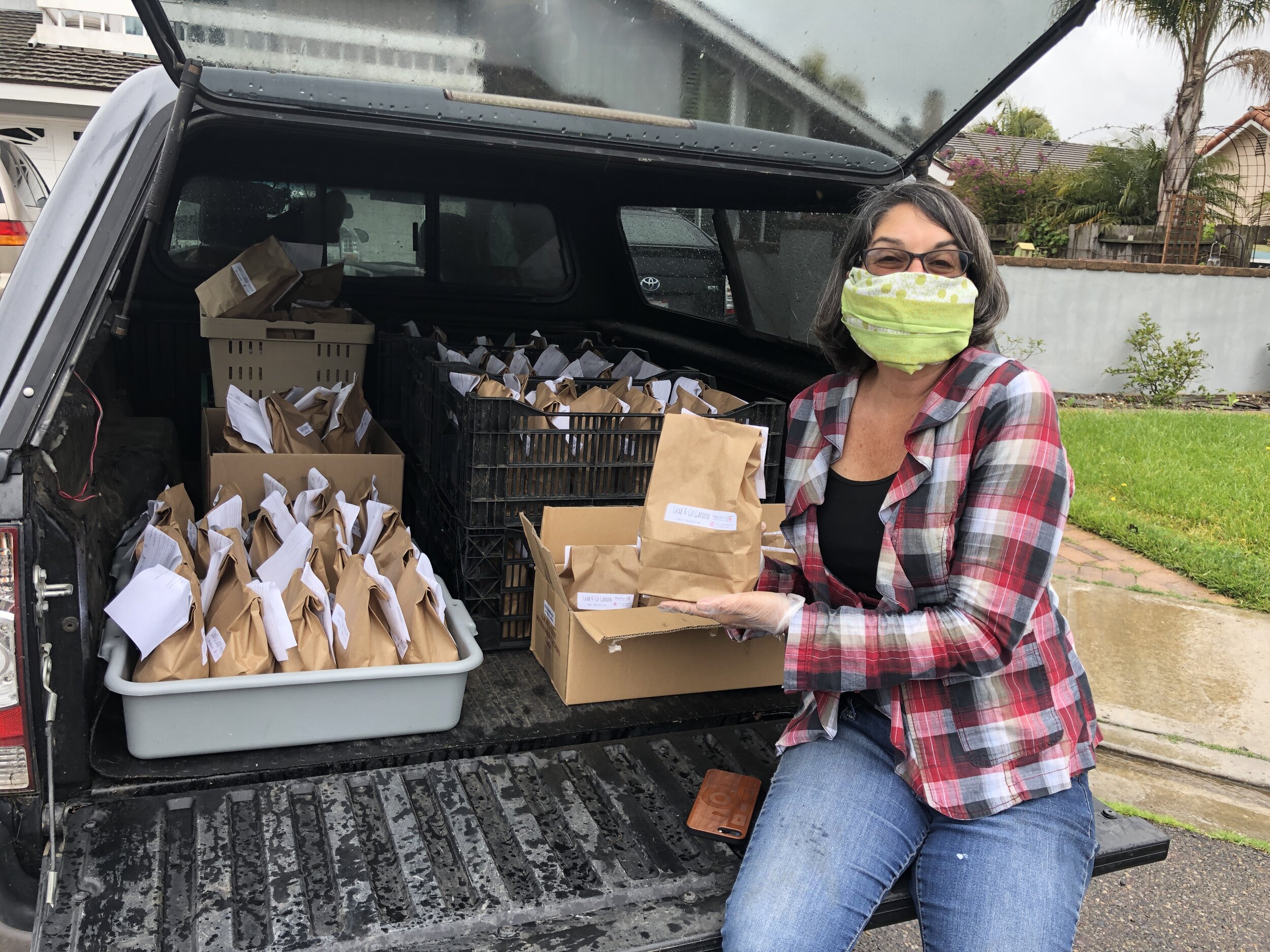
Crater Garden, Regenerative Farm and Family
This permaculture operation has neat features including a crater garden, food hedge, and chinampas.
Tim Southwell of ABC Acres in Montanna talks about a regenerative approach to farming, family, community—and about his crater garden.
“Our chickens know no boundaries.”
We head to Montana to chat with Tim Southwell of ABC Acres, the permaculture homestead he and his his wife Sarah created.
Southwell, who grew up in suburban Houston, explains that it was while living in Kansas City and growing a front-yard vegetable garden that he was introduced to permaculture and many of the concepts that he uses today on the farm.
In addition to livestock, they have a crater garden, a food hedge, chinampas, and a sunken greenhouse with citrus, bananas, figs, and papaya.
The unique microclimate created by the crater garden permits them to grow apples, peaches, plums, nectarines, and apricots in their harsh climate. He explains, “Every fruit tree we have, we build with it a microclimate.”
Crater Garden
Southwell says that the microclimate in the crater garden—a below-grade garden—is created by a number of things that work together:
The winter sun warms the south-facing slope of the garden.
Runoff from rain collects at the bottom of the garden, creating a pond—and the water in the pond collects heat that is then radiated at night.
The water reflects light onto plants in the surrounding crater garden.
Because the garden is below grade, cold winds pass over top of it.
While frost normally settles into low areas, it does not settle into the crater garden because the thermal mass of the water creates convection, so the air keeps moving.
Large rocks are partially submerged in the pond to act as “battery chargers” in the pond, adding to the thermal mass.
Food Hedge
The food hedge, which Southwell calls the “fedge,” provides privacy, blocks wind, attracts birds, and keeps livestock where they are supposed to be. Food plants in the fedge include:
brambles
sand cherry
serviceberry
goji
aronia
josta
honeyberry
“My children will be outside grazing the food hedge.”
Chinampas
Southwell explains that he was inspired by systems used by Aztec famers to create “chinampas” on a boggy section of flood plain.
He placed cottonwood logs on the low-lying ground, and then capped them with old hay and leaves, which decompose to create a rich soil. Over time, the decaying, spongy cottonwood logs help to wick moisture upwards.
He says that in this sort of situation it’s important to grow plants that don’t mind moisture. Raspberries grow well for them.
Agritourism
Agritourism become an income generator on the farm in 2017. Southwell noticed a big appetite for opportunities to connect with farms, food production, and nature.
But he felt that farms, and the stories behind them, were poorly represented online. He and Sarah created the online platform yonder.com as a way for to connect people with nature.
No-Dig Gardening
No-dig gardening is good for the soil and for the environment. It’s also good for gardeners—who have less digging to do!
Garden expert Charlie Nardozzi talks about no-dig gardening
In a broadcast that originally aired live on The Food Garden Life Radio Show, we chat with Vermont garden educator and radio host Charlie Nardozzi.
Nardozzi discusses his journey into no-dig gardening—and why it’s good for gardeners, the soil, and the environment.
He also tells us about his new book, The Complete Guide to No-Dig Gardening.
Nardozzi hasn’t always been a no-dig gardener. He used to garden with a gas-guzzling tiller. He shares ideas for gardeners who want to create a new no-till garden, as well as ideas about how gardeners with existing beds can transition them into a no-till system.
No-Dig Gardening by Charlie Nardozzi
Benefits of No-Dig Gardening
Nardozzi says that a key benefit of no-dig gardening is getting more from the same amount of space. Then there’s the work: Once a no-dig bed is established, it requires less heavy digging by the gardener.
There are also other reasons to consider a no-dig approach:
Weed seeds remain buried where they cannot germinate
Carbon remains locked up in the soil
Healthy soil microbe communities feed plants by breaking down organic matter and releasing nutrients
Emma’s Tomato-Talk Segment
In Emma’s Tomato segment, we explore the topic of “keeper” tomatoes. We got quite a reaction on social media a short while back when we posted pictures of bruschetta made from tomatoes we harvested in October. We still have some of those tomatoes in our storage room—and it’s February. They’re not canned, not frozen…they’re keeper tomatoes that store very well.
Biggs-on-Figs Segment
In the Biggs-on-Figs segment, we head to New York State to chat with permaculture teacher and grower Jonathan Bates at Food Forest Farm. He grows figs in a in an old sheep barn that he calls his “figgery”—and uses a “figloo” within it.
Fig plants are trained as “stepover” figs, horizontal cordons low to the ground. After harvest, Bates prunes vertical branches back to the main horizontal trunk, then he makes a figloo over top for winter.
Bates also discusses varieties suited to his climate and growing method. Florea and St. Rita do very well for him.
Youth and Gardening
The theme of the today’s show is youth and gardening.
Vivien Wong, 15-year-old gardener and garden blogger
The theme of the today’s show is youth and gardening.
We speak with 15-year-old gardener Vivien Wong in New York State, who fills her small suburban yard with fruit and vegetables. She has been documenting her gardening journey with the goal of inspiring other teens to grow their own food.
Along the way, she won a prize at the fair!
“Anyone can grow their own food if they get some tips from other gardeners.” Vivien Wong
The Seed
Wong’s interest in gardening started in a fourth grade classroom. After the class grew plants from seed, every student was able to take home a plant. She chose a beefsteak tomato—and hasn’t looked back.
She has found inspiration on Instagram. “As soon as I joined Instagram, I discovered a whole new community of gardeners,” she says.
Kids Gardening
In the second half of the show we chat with Em Shipman, Executive Director of Kids Gardening, a not-for-profit organization with a mission to get kids gardening.
“It’s our job and our passion to support those people that we know are working really hard to provide important, meaningful education opportunities for kids,” says Shipman.
The Kids Gardening website has lesson plans, ideas for activities, and information about grants for community and school gardens.
Her top tips for people new to gardening with children and youth:
Start small. If you haven’t gardened before, a few plants in pots might be a suitable start.
Keep expectations low because learning happens even when it’s not visible.
Things might not go as planned…but that’s an opportunity to learn and to ask questions.
Breeding Tomatoes for the "Holy Grail"
With a reputation for unusual and wildly popular tomato varieties, tomato breeder Brad Gates focuses above all else on flavour.
Brad Gates of Wild Boar Farms on breeding tomatoes.
“I was looking for the holy grail that would have my customers come crawling back on their hands and knees.”
With a reputation for unusual and wildly popular tomato varieties, tomato breeder Brad Gates focuses above all else on flavour.
He didn’t start out working in tomato breeding. While working in the landscape industry, he was asked by a friend to help sell heirloom tomatoes at a farmers market. Gates loved the energy at the market—and he was fascinated with the unusual heirloom tomatoes.
So he started growing, and, eventually, breeding tomatoes.
Tomato Breeding
Gates says that flavour is always his top goal. Other important traits include:
pest and disease resistance
yield
shelf life
Tomato Flavour
Gates says, “Tomatoes have the potential of so many flavour aspects.” These include:
umami
richness
tartness
sweetness
He says that in general, he finds store-bought tomatoes are “one-dimensional.”
Looking Ahead
Heat and cool tolerance are traits that he has found in some of his varieties. For example,
Pink Berkeley Tie-Dye does well in cooler climates such as San Francisco, which is cool and foggy.
Lucid Gem has proven to be very tolerant of hot weather. In heat waves, when other varieties do poorly, Lucid Gem stands up well.
Gates says that he is currently working on small, two-foot-high tomato varieties that produce gourmet tomatoes.
Why small? Gates says, “Why grow one or two varieties when you can grow 10 or 15?”
Home and Community Cold Cellars
What’s old is new: Cold cellars are back. Transition Guelph launches an initiative to build local food-storage capacity through cold cellar education and installations. We find out what they’re doing—and get tips to help you make a home cold cellars.
What’s old is new: Cold cellars are back.
Transition Guelph launches an initiative to build local food-storage capacity through cold cellar education and installations.
We find out what they’re doing—and get tips to help you make a home cold cellars.
We are joined by Steve Tedesco and Ian Findlay from Transition Guelph. Tedesco is a Guelph-area farmer, and Findlay is a contractor specializing in cold cellars.
Why Cold Cellars are Back
Findlay says to think of a cold cellar as a passively-chilled walk-in cooler. He says people with the added food-storage capacity of a cold cellar can store more homegrown produce, and can also stock up on locally grown produce when it is in season.
Tedesco points out that having a cold cellar can change the way meals are planned. “It becomes an active participation sport to manage your cold room and plan your meals around what you have so that nothing goes to waste,” he says.
The Transition Movement
Tedesco explains that the Transition Movement is a global movement focused on building local resilience. Transition Guelph formed in 2009.
Transition chapters undertake projects that strengthen community resilience in six areas:
Food and water
Energy
Environmental stewardship
Economic vitality
Equity in a community
Community engagement
Home Cold Cellars
Findlay suggests spending time to understand 3 key elements to a successful home cold storage.
Ventilation to supply fresh air and exhaust warmer, moist air
Temperature control (the ideal temperature range is 2-5°C)
Humidity (many root vegetables store best in high humidity)
Tedesco and Findlay are finding that many of the newer homes in the Guelph area have a small space under the front porch that is well suited to making into a cold cellar.
Besides making a cold storage under a porch, other approaches include:
Partitioning off an area in the basement
Creating a stand-along cold cellar in a hillside (Findlay talks about concrete bunkers)
A trench storage in garden
Findlay says, “With enough ingenuity and sweat equity you can make any space work.”
Harvest More With Garden Bed Covers
Find out how to use garden bed covers to harvest more and deter pests: row covers, cloches, cold frames, greenhouses.
Niki Jabbour, author of Growing Under Cover: Techniques for a More Productive, Weather-Resistant, Pest-Free Vegetable Garden, talks about using garden bed covers.
In a broadcast that originally aired live on The Food Garden Life Radio Show, we chat with vegetable gardening expert Niki Jabbour about using garden bed covers. She is the author of the new book, Growing Under Cover: Techniques for a More Productive, Weather-Resistant, Pest-Free Vegetable Garden.
Jabbour is a Halifax-based, award-winning author, host of The Weekend Gardener radio show, and one of the experts behind the gardening website Savvygardening.com.
She discusses the benefits of using garden bed covers, choosing covers suited to your situation, how to boost insulation of cold frames, tips for people thinking of a greenhouse, and greenhouse covering materials.
Why use Garden Bed Covers
Jabbour says that there are many reasons to use garden bed covers. “It’s about gardening smarter, not harder,” she says.
Reasons to use garden bed covers include:
Larger harvests
Better ability to control the growing environment
Year-round harvests
Including more “hyper-local” food on the menu
Reduced pest pressure
Creating conditions suited to exotic crops
6 Ways to Boost Insulation of Cold Frames
In Growing Under Cover, she talks about six ways to boost the insulation of cold frames.
Line with foam
Add thermal collectors such as water-filled bottles
Surround with straw or boughs
Bury the cold frame in soil or mulch
Seal the cold frame with weatherstripping
Cover it on cold nights with carpet, old blankets, or some sort of insulating material
Types of Garden Bed Covers
Jabbour points out that not everyone has the space or money for a glass greenhouse. But there are many other options to provide cover for crops. These include:
Row covers
Cloches
Cold frames
Plastic-covered greenhouses
Mini hoop tunnels
Emma’s Tomato-Talk Segment
DO YOU EVER FEEL overwhelmed when trying to choose tomato varieties for your garden? In Emma’s tomato segment, she talks about choosing tomato varieties suited to your garden. She talks about:
Thinking about your own preferences
Days to maturity
Plant size
Disease resistance
Shipping costs
Biggs-on-Figs Segment
Melinda Myers talks about growing figs and artichokes in Wisconsin.
In the Biggs-on-Figs segment, we head to Wisconsin to chat with gardening expert Melinda Myers, who grows figs and artichokes in her USDA zone 4b garden.
A fig grower for over a decade, Myers says she also likes to include figs in her presentations because it gets people’s attention. “It always gets a second glace from anybody in the North or Midwest,” she says.
Find Myers online at melindamyers.com, where she is currently offering a number of free webinars.



